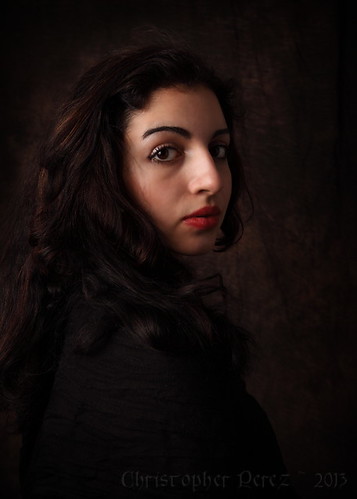I recently finished leading a three day photographic studio lighting workshop. It was kindly hosted by WICE, a leading Paris-based anglophone ex-pat community organization and held in their offices near metro stop la motte piquet grenelle.
On Day Two of the workshop, we worked with two kinds of studio lighting. The first was the kind of light used by Rembrandt for his late in life self portrait.
There is a great (fictitious as Rembrandt might have come back from the dead for this :-) discussion about this light setup by David Hobby over on his Strobist page. It's well worth a read.
As with the William Mortensen lighting setup from Day One, this kind of light uses the shape and texture of the subject to give an image it's sense of depth. Like the "Iconic" light of William Mortensen, you won't often see this kind of light used in modern photography. Yet it retains many merits that can be worth exploring.
The second lighting setup we used on Day Two.
This is the light that was used predominantly in portraiture from the Renaissance period on. Artists from Titian to Renoir have used this light to great effect. It uses (many times soft) shadows as well as light to give a subject it's sense of depth and beauty. Modified forms of this setup are widely used in photographic situations today.
Here is an example of my use of this kind of light.

Here is the email I sent out at the end of Day Two's workshop.
On Day Two of the workshop, we worked with two kinds of studio lighting. The first was the kind of light used by Rembrandt for his late in life self portrait.
There is a great (fictitious as Rembrandt might have come back from the dead for this :-) discussion about this light setup by David Hobby over on his Strobist page. It's well worth a read.
As with the William Mortensen lighting setup from Day One, this kind of light uses the shape and texture of the subject to give an image it's sense of depth. Like the "Iconic" light of William Mortensen, you won't often see this kind of light used in modern photography. Yet it retains many merits that can be worth exploring.
The second lighting setup we used on Day Two.
This is the light that was used predominantly in portraiture from the Renaissance period on. Artists from Titian to Renoir have used this light to great effect. It uses (many times soft) shadows as well as light to give a subject it's sense of depth and beauty. Modified forms of this setup are widely used in photographic situations today.
Here is an example of my use of this kind of light.

Here is the email I sent out at the end of Day Two's workshop.
Bonjour,
I'm
enjoying seeing your work and how you are assimilating the
instruction. Pretty dramatic stuff, l from what I've seen on your
camera's LCDs.
Terribly
sorry I couldn't make it to tonight's vernissage. As such, could you
bring any prints you would to share to next week's class? Maybe we
should make that Homework Assignment Part I. Yes. Please bring any prints you might have and we'll take a look together.
Using
the lighting setup we used last today, you can create the lighting
style found in the attached art (I included works of Manet, Renoir, and others as examples). Simply move the lights further to the
side and make sure you play with the distance the reflector is to the
subject to achieve the right balance between the light side and shadow
side.
Keep in mind that simple one light + reflector setup was used early on by the photographer in this link. Bill Gekas is ALL over the world right now and in ALL manner of publications. Take a close look
and see if you agree with me as to why he's so popular. I feel his
photography ROCKS! And with the knowledge you now have, your's does
too. Fun, isn't it??? [there are three different links in the previous
paragraph]
Now onto Homework Assignment Part II.
Please process an image or two (or more) from today's shoot ahead of
next week's class, forward them to me, and I will share them with
Aubrey, our today's model.
As always, if you have any questions, please feel free to ask me. I'm happy to help.
I'll send out next week's art to reverse engineer later this week.
Regards - Christopher Mark Perez


No comments:
Post a Comment